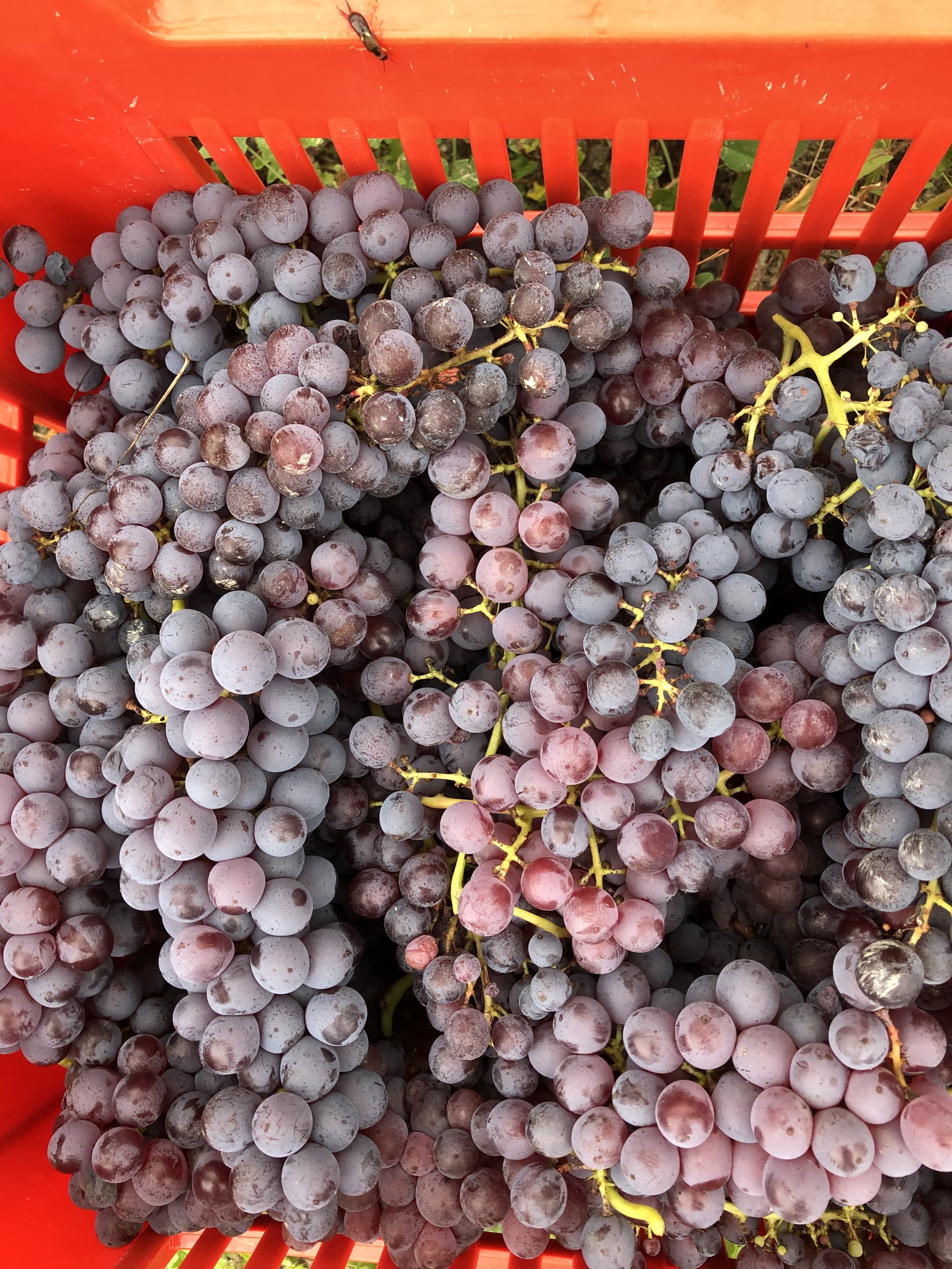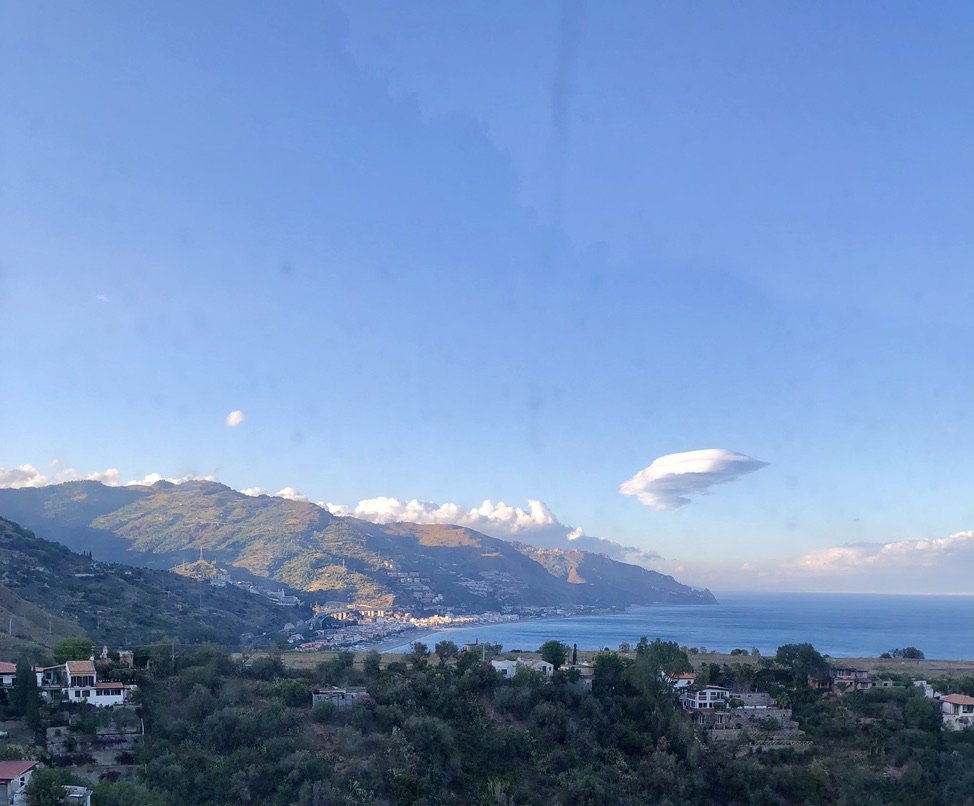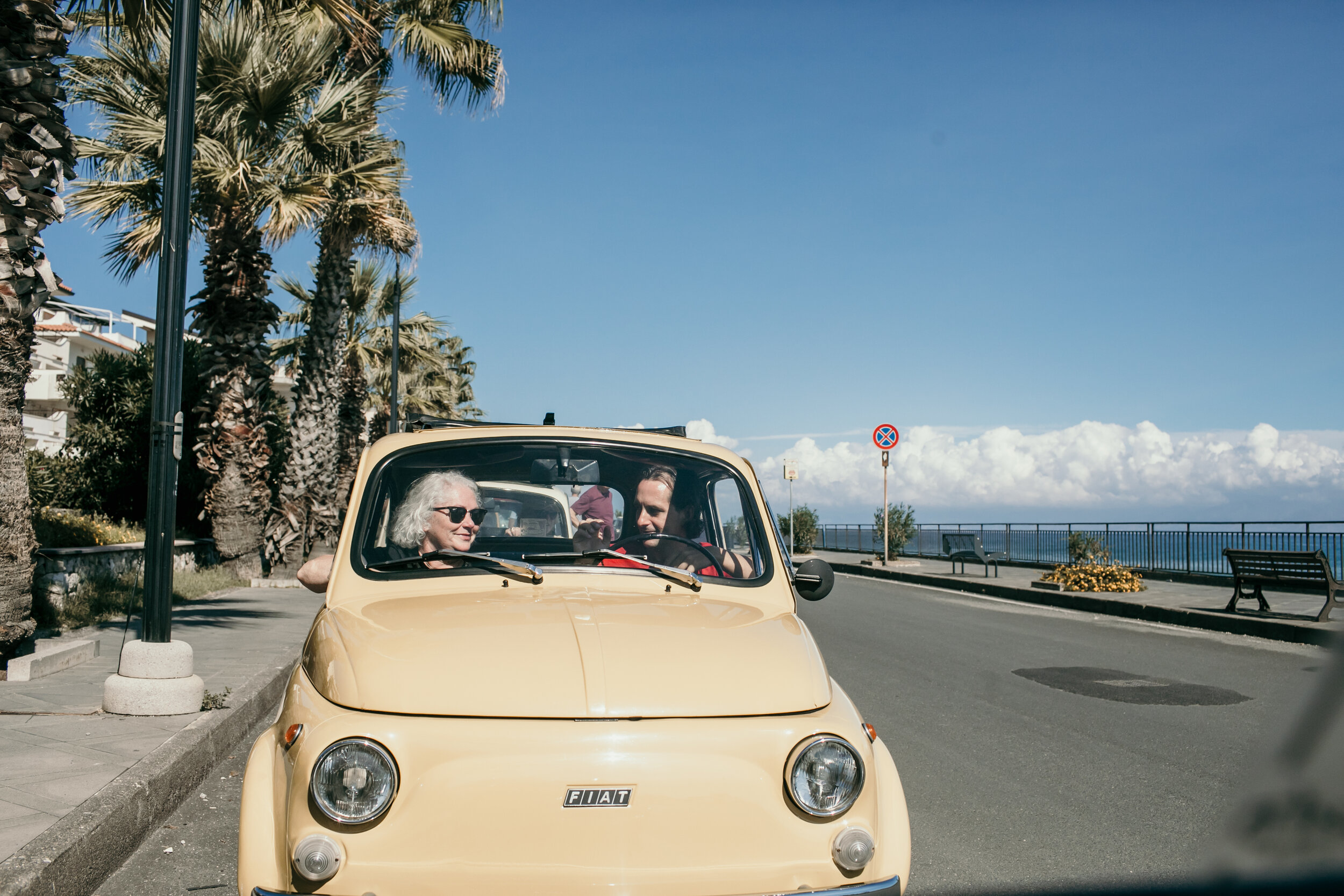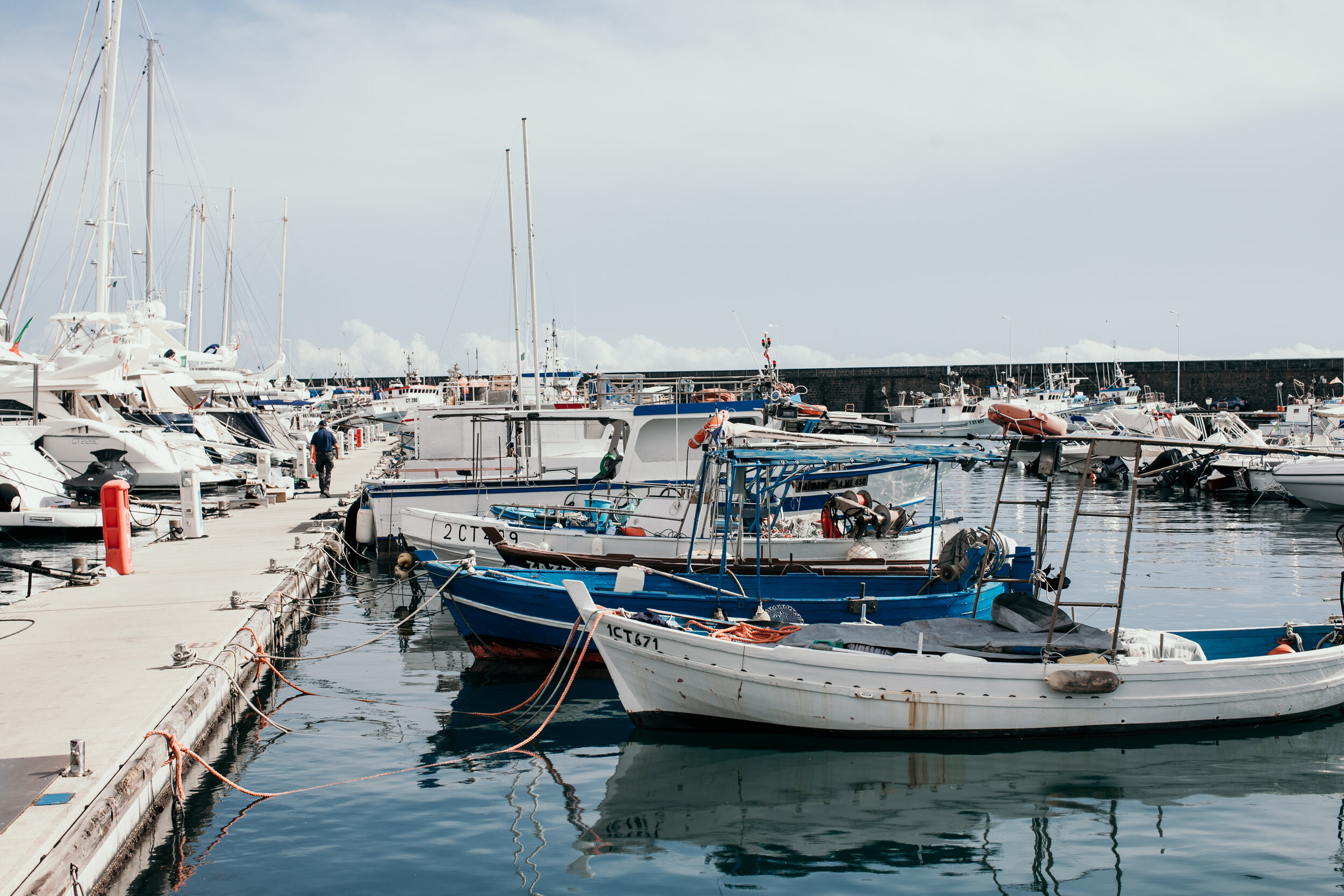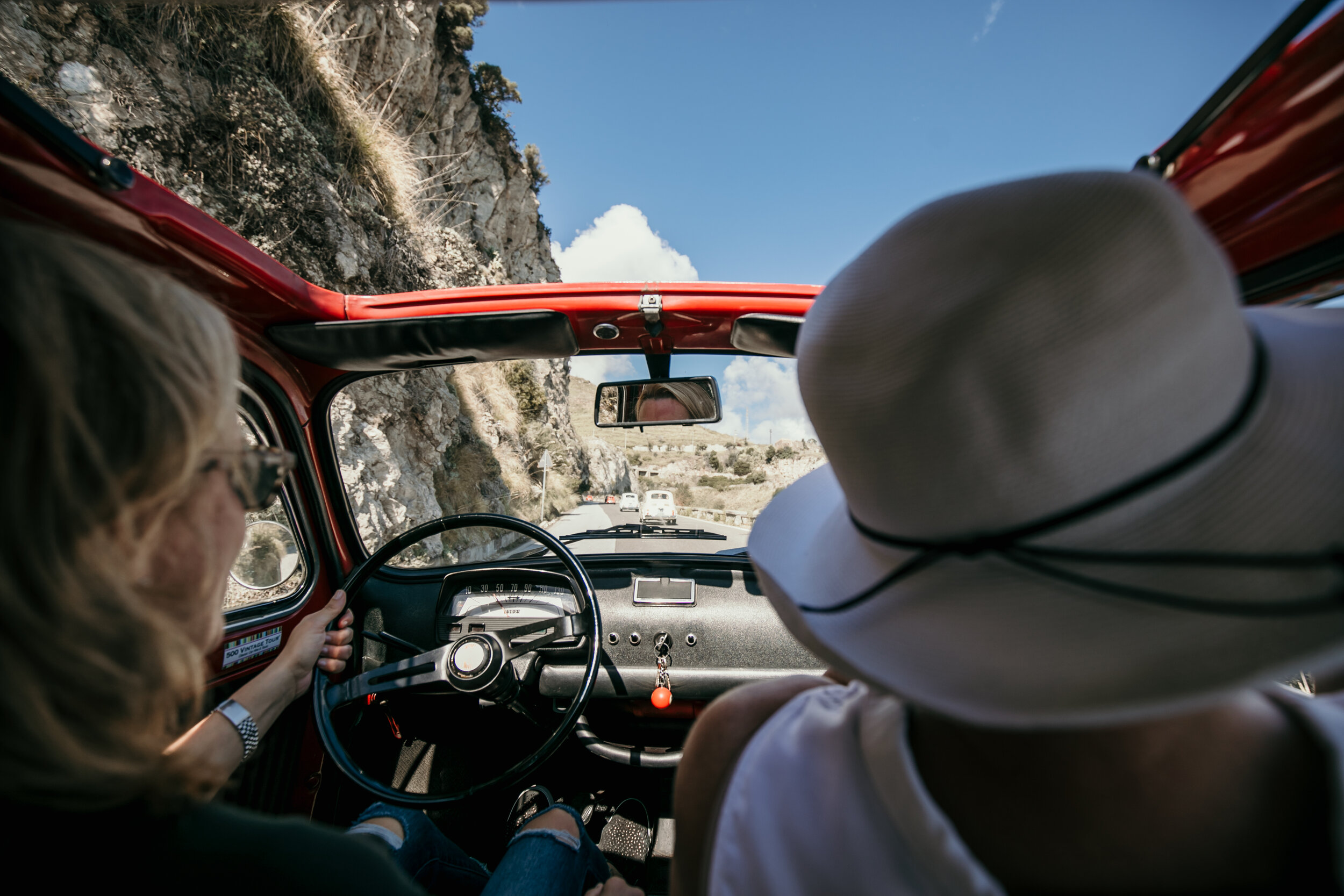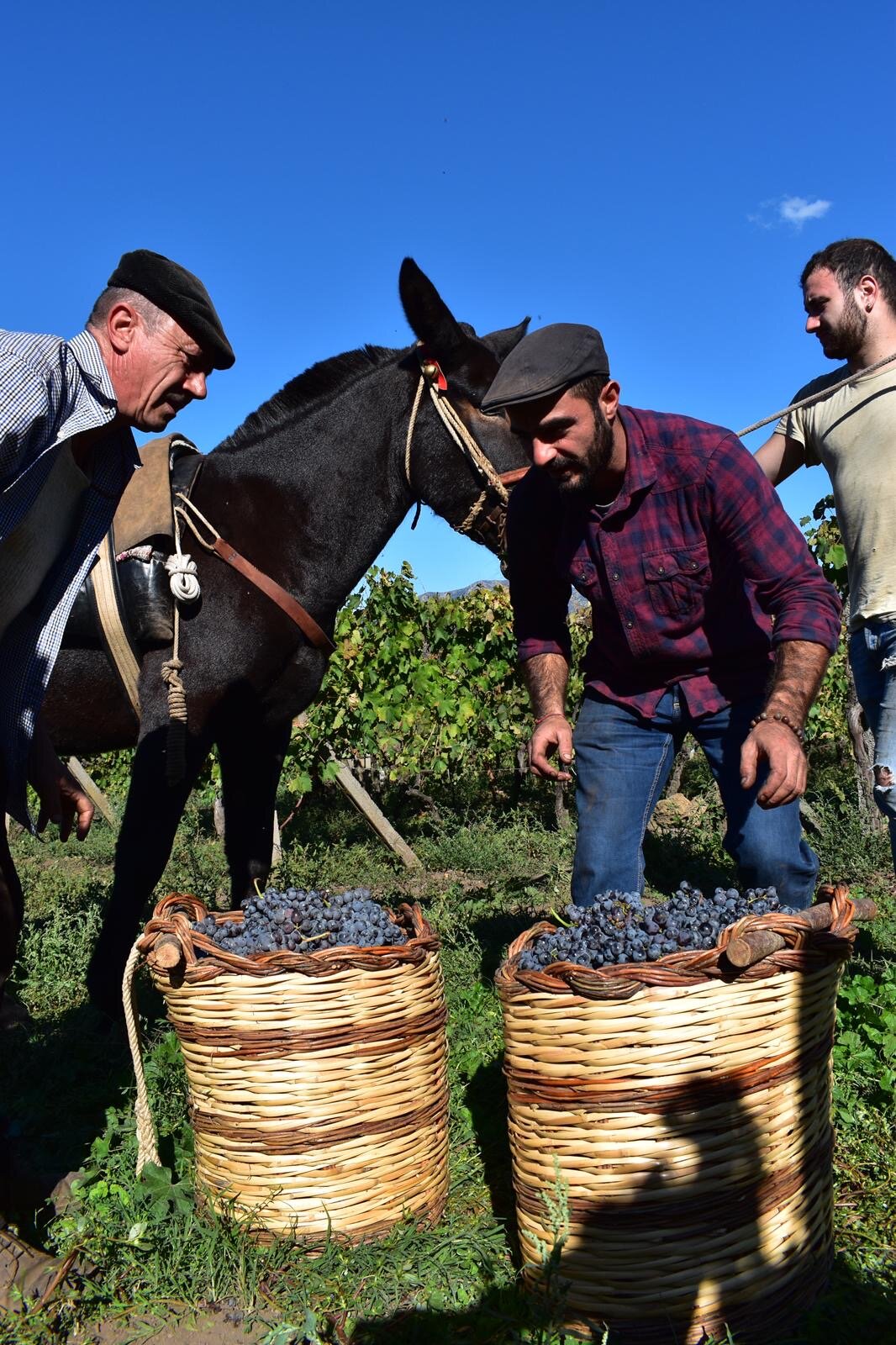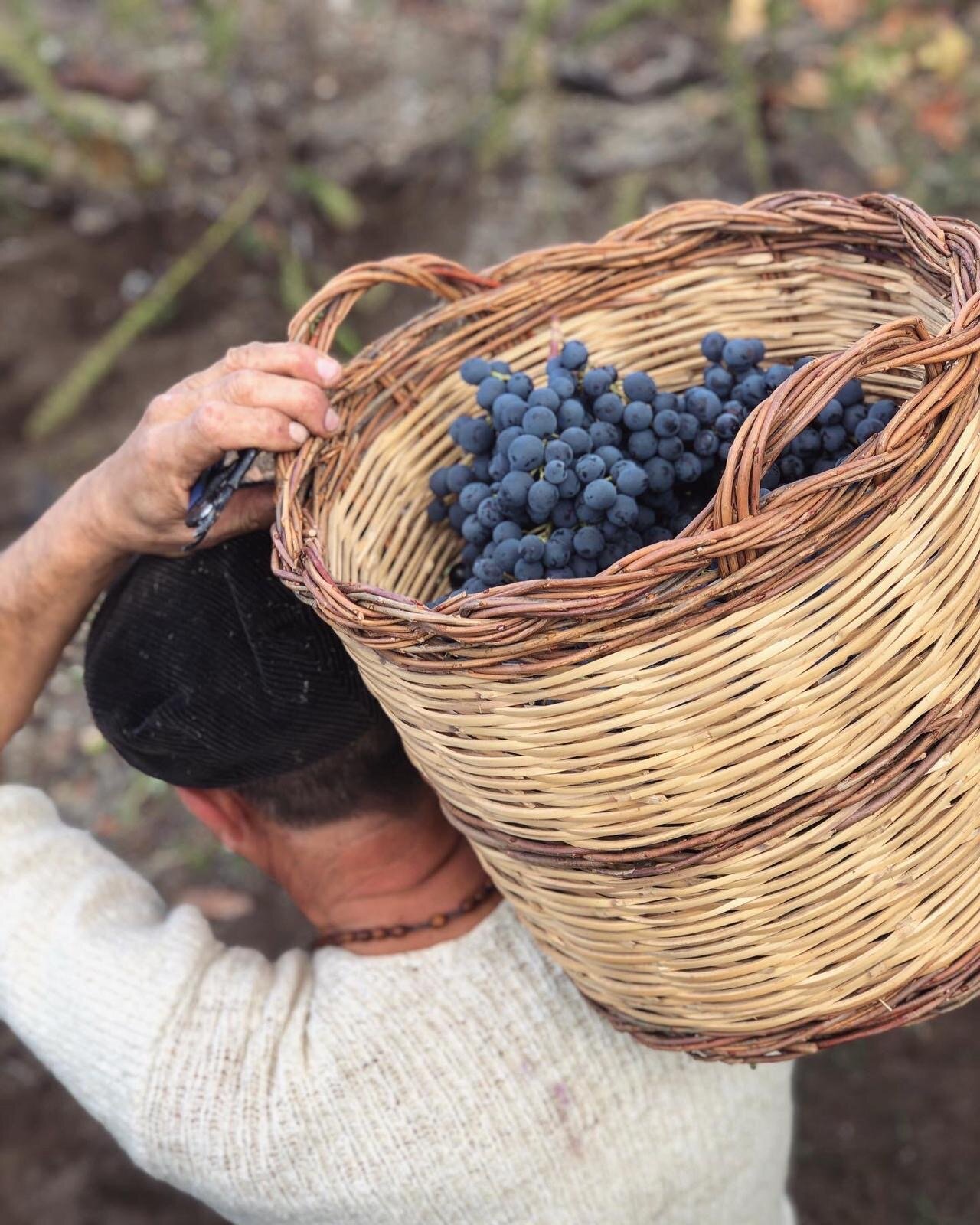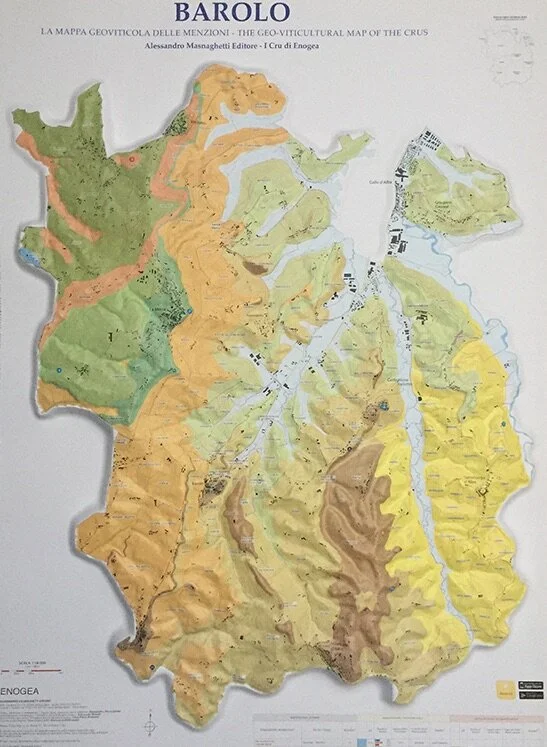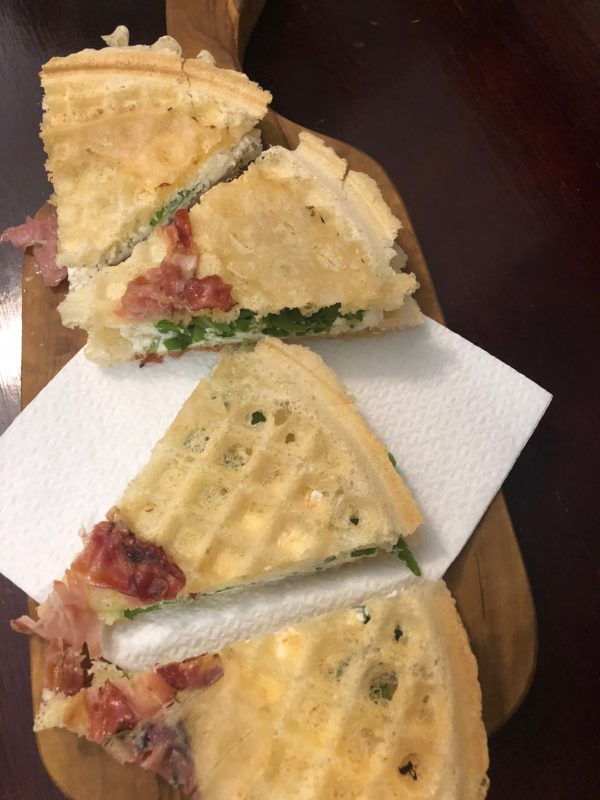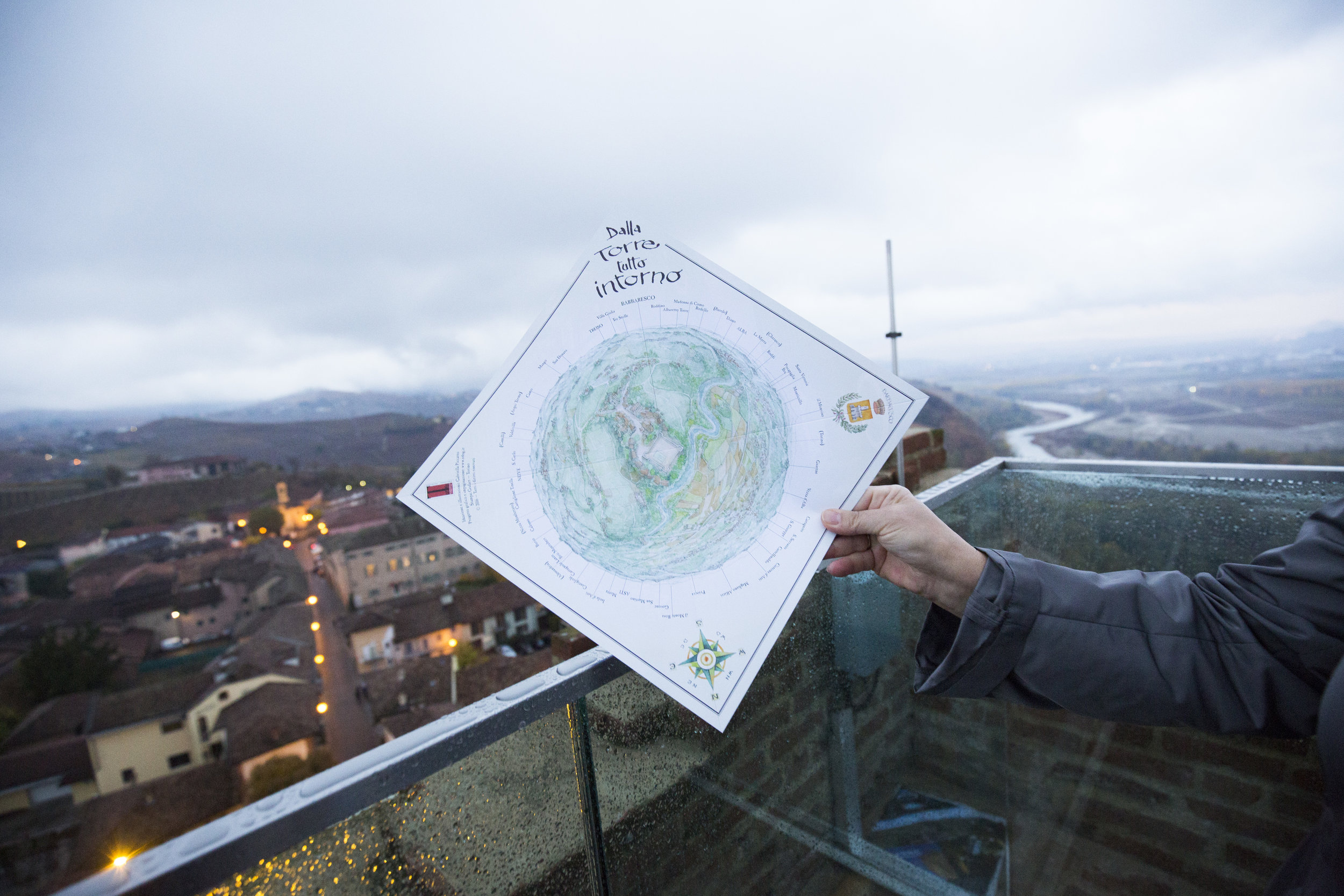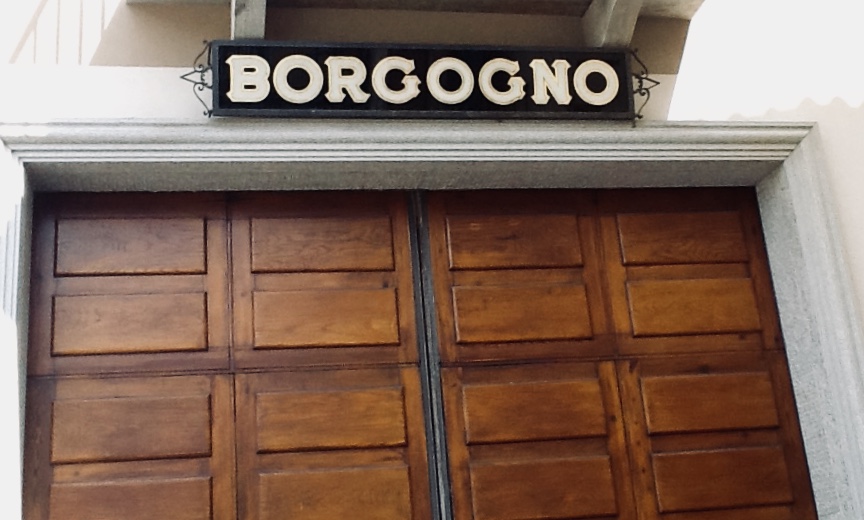The term natural wine derived from a subcultural wine movement in the 1980’s taken from the French term “vin sans soufre”. By the late 1990’s came the term “vin naturel” that was given to this genre of winemaking. In the beginning it was more about working organic or biodynamic with no additions to the wine during the winemaking process, taking out the chemicals in vineyards and trying a bit of a holistic or natural approach to creating these wines. Natural because it is supposed to be just fermented grape juice, going back to a time where many things were unknown but fermented fruit was always welcomed as it was known to still be safe to consume, also good for the gut. Wine in its history has always been manipulated, the Romas where the first to experiment with sulphur, the Greeks added resin and essence to the wine to give it a “better” flavor, the peasant farmers would add water to their wine as it was ofter too concentrated, the French add sugar to their wine for a higher alcohol content. After WWII, naturally being such hard times for everyone, the use of new chemicals that seemed to work to protect one’s crops were becoming more and more popular to the point where almost everyone was using them. It got to the point where these chemicals were becoming a dependance and other new substances were making their way into the wines. You are able to change the flavors of the wines, change the tannin structure, change the acidity level even determine the speed of the fermentation and you can inoculate or force malolactic fermentation too. Things are getting way out of hand or the winemakers hand is becoming too heavy. Keeping in mind that, all of these things can be added to wine and there will never be any talk about listing such ingredient on the label. In a couple of the following instances ingredients placed on the label would have helped save lives. The first wave of unacceptable wine making practices were recorded in the 1980’s. With a couple of unimaginable scandals, one in Austria where winemakers were adding diethylene glycol to their wines to raise the sweetness levels. Then there was the wine adulteration scandal in Italy in the 1980’s for bulk wine production, where several deaths associated with the addition of Methanol in wines.
Typical practices today for Natural Wine in the vineyards are of course either organic or biodynamic standards. Which means no pesticides, herbicides, or other conventional products (chemical manure, fungicides, or other treatments that could be used in the vineyards. Some producers will take it as far as to not even use machines in the vineyards that consume gas as this will then omit poisons into the vineyards. They will till the soils by hand with a hoe and even going as far as to stomp on weeds (in extreme conditions) to keep them lower to the ground so they do not affect the grapes with molds or extra humidity. They will use horses instead of tractors, and sometimes they will have sheep, or other animals come into the vineyard to eat the weeds as well as fertilize. In the winery this is where it gets a bit tricky in my opinion, this is the part where you can easily mess up. First needing to have a healthy grape from the vineyard, then not messing it up transforming it into wine. The use of sulphur is not allowed before the fermentation starts as you do not want to disrupt the natural yeasts, this can be quite difficult as if you have any off yeasts around many problems can then occur. This is where the idea from Jules Chauvet of inventing the carbonic maceration. To have an environment where fermentation can happen spontaneously but with less risk on bacterial contamination. There are some producers who will use sulfur in very small amounts and others who chose to go 0. If you are not able to follow the whole wine making process very closely the chances of having some kind of problem in the fermentation or even with the aging is quite possible, or if unwanted yeasts or bacteria start to show up in the cellar these two can be problems in the winemaking and aging.
***
Some of the challenges that natural wine producers will face today, the first being the controversial opinions from anyone in the wine industry, which is why I am assuming that we are writing this paper as there are many different opinions to this style of winemaking to the point where it is almost political. Many people will state that wine is not a natural occurring process, there must be the hand of human to make a wine happen. These things cannot just happen naturally.
One of the biggest challenges for this winemaking style, are the uncertainty of indigenous yeasts. Yeasts colonize and breed in any environment, you have hundreds if not thousands types of Saccharomyces yeasts. These yeasts breed and create many different types of offspring some of them good and many of them problematic. The ideal strain best suited for winemaking is Saccharomyces Cerevisiae. The problem in working with wild yeasts are that they, well as the name suggests wild and cannot be controlled, so in a wild environment when you have many of these problematic yeasts the amount of uncontrollable flaws can easily get out of hand. Some of those typical flaws are volatile acidity, mouse, brettanomyces, as well as stopped fermentation due to tiered yeasts. With indigenous yeasts there is a greater risk that the fermentation of the sugars will not finish, and this will bring me to climate change which will be spoken about later on. The wild yeasts in years where sugar levels are greater (closer to 15% alcohol) these yeasts will have trouble to finish fermentation. They will get tiered or the alcohol will be too great and they will just die off, leaving a product that has not finished its fermentation. In a case like this, what do you do? This occurrence is quite common in the areas like Vouvray and Monthlouis where the winemaker will need to filter to take out these yeasts cells so wine does not undergo an unwanted bottle fermentation. Thus leaving a finished product with some residual sugar.
A big subject that even the most conventional winemakers are talking about today is climate change. With uncommon seasons and unpredictable weather patterns, working naturally is becoming every year more challenging. This having to do with winters being warmer than normal and snow falling much less every year. Springs being unusually cold and rains falling later in the year (typically during flowering), with also much more hail. Summers being warmer than normal and not giving the thermic temperature differences between day and night. Thus stressing the vines creating higher sugar levels, and in some areas creating more humidity. Harvests unusually early with alcohol levels being a half to one grade higher. The wineries are needing to practice different canopy management as sunburn is becoming a bigger problem, as well as waiting closer to the final harvest, the timing for green harvest. If you start too soon the grapes will have a spike in the sugar content, that could result in unbalanced wines.
We should then touch on bulk wine producers trying to create competition in the natural wine business and more so creating problems to the smaller wineries in this genre. To make this wine in bulk to keep the pricing lower to reach a larger population is quite impossible. Having to do mostly because much of the work is more labor intensive; work in the vineyard has to be done by hand and organic production means that there will inevitably be more treatments and with products that have a much higher costs. During harvest period, the grapes cannot be harvested by machine and will then be harvest by hand creating again more costs. Natural wine as a whole has to ask for higher prices because the margins to create a bottle of this type of wine are high. Large companies who want to make natural wines to have a product following the current trends must create a more competitive product by price. By doing so they end up cutting corners and this ends up at everyones costs. Yet, while they are able to market their wines as natural in reality they do not withhold the natural wine standards. It is offal as wine business has got too many liars and storytellers and like most things it comes down to the client to know and do their homework to have the facts if these wineries are doing their part and telling the truth, as we have learnt in the 1980’s with the adulterated wine scandals.
The costs in general, labor, products, and the cost of land. In many areas especially the wine regions better known for production are quite untouchable especially if there are no investors involved or the producer is just starting out. The trouble for natural wine producers or even the growers, is that they will tend to be very small farmers and will not have the financial stability that a large corporate wine company will have. Also depending completely on nature and the skills in the vineyard and the winery if something goes wrong the winery in order to save its name should not release the wine. It is different when talking about making something for business and for passion. This year in particular with the pandemic producers are struggling more than ever.
One thing that is going in the right direction for natural wine is the regulations that Demeter is working on in France to give the Vin Méthode Nature standard regulations that the wineries who wish to be placed in the category must follow. This will help to take out some of the problematic producers who can say for selling points that their wines are natural. In France at the moment it is just the beginning but in a few years once these laws have been organized and passed will give these smaller producers who have had trouble within the denominations the chance to then again have a classification for their wines other than table wine. Once in place hopefully every wine making county will then participate with the guidelines of Vin Méthode Nature and will then in turn create protection laws to this label.
Thinking of sulfur as a product that is important in the timing of fermentation. A little bit will take out all of those unwanted yeast cells that could give an off flavor or make the fermentation process come to a halt. “Think of sulphur in fermentation this way; you have a carrot that you want to eat, no sulphur would be putting the carrot directly into the pan, leaving it in its entirety, not peeling it, not cutting it and; cooking it as is. When you add a bit of sulphur before the fermentation it is like taking that carrot, peeling it, and then chopping it up so then when you cook it you are able to have the whole carrot at the same consistency, perfectly cooked and delicious for eating.” Today wine is the only product for consumption that does not have its ingredients listed. People think that wine is just grape juice fermented, which in reality it is not. The idea with Natural wine is to awaken people about everything that could possible go into a bottle of wine, to give people just grape juice that has been fermented and that’s it. What people don’t realize is the problems that can occur in the winery that those unlisted ingredients are what help to protect the wine making it clean or homogenous.
Why Natural Wine is like Punk Rock
What has attracted people to these natural wines in the beginning was after the Parkerfacation completely took over the globe in the 1990’s, where it homogenized everything! People were tiered and fed up with everything tasting the same. When the first group of natural wines started to circulate into the restaurant scene, the sommeliers were excited, something fresh, something alive. These wines tasting like something that once was, something wild, that spoke to the Anthony Bourdain in them. What natural wine has got going for it is the whole movement is alive, and it does not just stop at the wine. There is an art to everything happening, its more than just a movement its a lifestyle. Quite similar to that of the punk rock movement, it was not just about the sound, but also the fashion, the philosophy, the attitudes. Coming from this movement, we are seeing zines being written, wine fairs with much success across the globe, podcasts, and IG personalities, all wanting the next best Glou-Glou.
Wine was becoming like psychedelic and progressive rock, you went to school and you studied, and now you have all the instruments to make the perfect composition. Every band that came out of the 1970’s bloat rock were all just perfect and also timeless, but something needed to change. People get tiered of perfection. They get tiered of knowing that if they open up this Cake Bread Chardonnay it is going to taste the same as last years batch and the batch from seven years before. Then out of no-where, garage bands were starting to pop up. No classical music training, no training at all. Just pick up the good old guitar and bang out 3 chords, throw on some ripped Levis and a black tee shirt and you are good to go. Blondie, Talking Heads, Sex Pistols, the Crass; it was a breath of fresh air. It woke up the senses, everyone was excited and everyone thought they were cool, they were creative and they were inspirational! The bad asses of the punk scene taking over the cities like London, New York and Los Angeles, everyone wanted to be a part of it. It was art, they were wild, it was sexy and they knew it was time for a change.
Then it happened in the wine world, the sommeliers are sick and tiered of these perfect pristine wines that are like opening up a bottle of jungle juice. Everything was starting to taste the same, the wineries in Brunello di Montalcino were adding Cabernet Sauvignon to their Sangiovese to give a wine with more color with more body, they were all chasing after those Parker points to be able to make a living and a name for our products that could not stand out in a sea of drones. From this some of the winemakers they rebelled, they wanted something different, they were obsessed with terroir and in order to gain the real representation of the vineyard they needed the vines and the grapes to be in their own best health. They knew no additives and they knew nothing to kill of the precious ecosystem living amongst those vines.
Then over time evolving into a winemaking style of one without additives. No added yeasts for fermentation, no added tannins, or acidity and a no chemicals period. As this continued they realized that organic and biodynamic terminologies did not exactly match up with what they were doing, things started to change. The terms Naked, Low Intervention, Raw, or Fermented Grape Juice were all then names given to this style of winemaking. There seems to be much confusion about the vague terminology with regards to Natural Wine. With no certificates, no rules, and no-one to regulate or control the how and why these wines are to be produced.



